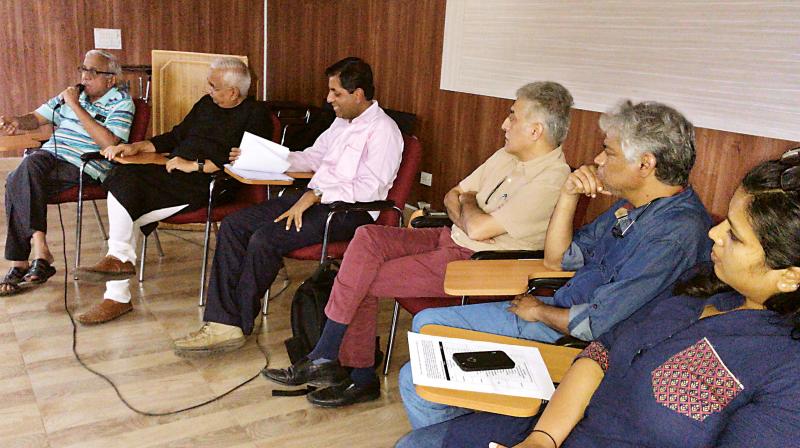Bengaluru: Elevated roads will worsen problems'
Develop a robust public transport system, BRTS, Namma Metro practical and long-term, say activists.

Bengaluru: Elevated corridors are back to haunt public imagination, with Chief Minister H.D. Kumaraswamy's decision to revive the proposal in his first budget. The project will include three major elevated corridors and three interconnected corridors, a 95-km network in total.
Citizen outrage against elevated roads is well-known, with over 10,000 people gathering to protest against the dread steel-flyover proposed by the Siddaramaiah government. Much to critics' dismay, the JD(S)-Congress coalition doesn't want to look too far for solutions either, and continues to field a host of expensive solutions, all of which will prove ineffectual in the long term as the volume of private vehicles continues to exist.
Solutions like pod taxis and multi-crore elevated corridors are being touted as the answer to traffic congestion, unhindered commutes, reduce vehicle operating cost, improve road safety and minimise carbon emissions. Activists disagree. The answer, they maintain, lies in a robust public transport system, agree activists, against a backdrop where Germany is preparing to offer free public transport to all to curb air pollution. Experts and residents are returning therefore, to their tried and tested method of protest, with Citizens of Bengaluru starting a discussion series.
"Multi-crore elevated corridors and pod taxis will only result in reversing these promises," says Dr Ashish verma, mobility expert and associate professor, Transportations Systems Engineering at the Indian Institute of Science. The discussion, organised by Citizens for Bengaluur, was titled Elevated Corridor + Pod Taxi = Nexi Gen or Nightmare" saw urban expert V. Ravichandar, thespian and urbanist Prakash Belawadi on the panel, along with Dr Verma.
Comparing the different transport modes, Dr Verma explained that building a kilometre's worth of a pod taxi network will cost Rs 50 crore, a kilometre of elevated corridor costs Rs 166 crore. These can carry 9030 and 3600 persons per hour, per direction, respectively. That said, "an investment of Rs 4 crore per kilometre on a Bus Rapid Transport System can move 15000 and the Metro, with an investment of Rs 150 crore per kilometre, can shuttle 69,000 people.”. The BRTS system gives the highest return on investment with 181 passengers transported per crore per kilometre, followed by the Metro.” The government's focus," he said, "should be an integrated approach towards improving public transport, rather than encouraging private modes which elevated corridors cannot sustain for too long."
Actor and activist Prakash Belawadi demanded that experts who propose the project to the government and the experts who oppose it, should be allowed to discuss the pros and cons in a public forum to arm the general public with adequate knowledge so that they can make a more informed decision. "As the public were made aware of the adversities the proposed steel flyover could unleash, they opposed it and the project was shelved."
Comparing the idea of government to curb traffic with elevated corridors and pod taxis with children demanding candy, civic evangelist V. Ravichandar said, "This is like our children demanding ice creams, chocolates and junk food."
Pod taxis, meanwhile, are used only in contained spaces like amusement parks and at airports across the world, never as a form of mainstream transport.
Mr N S Mukunda, member of Citizens' Action Forum said that before these kinds of mega projects public consultation is a must but is hardly cared for.

